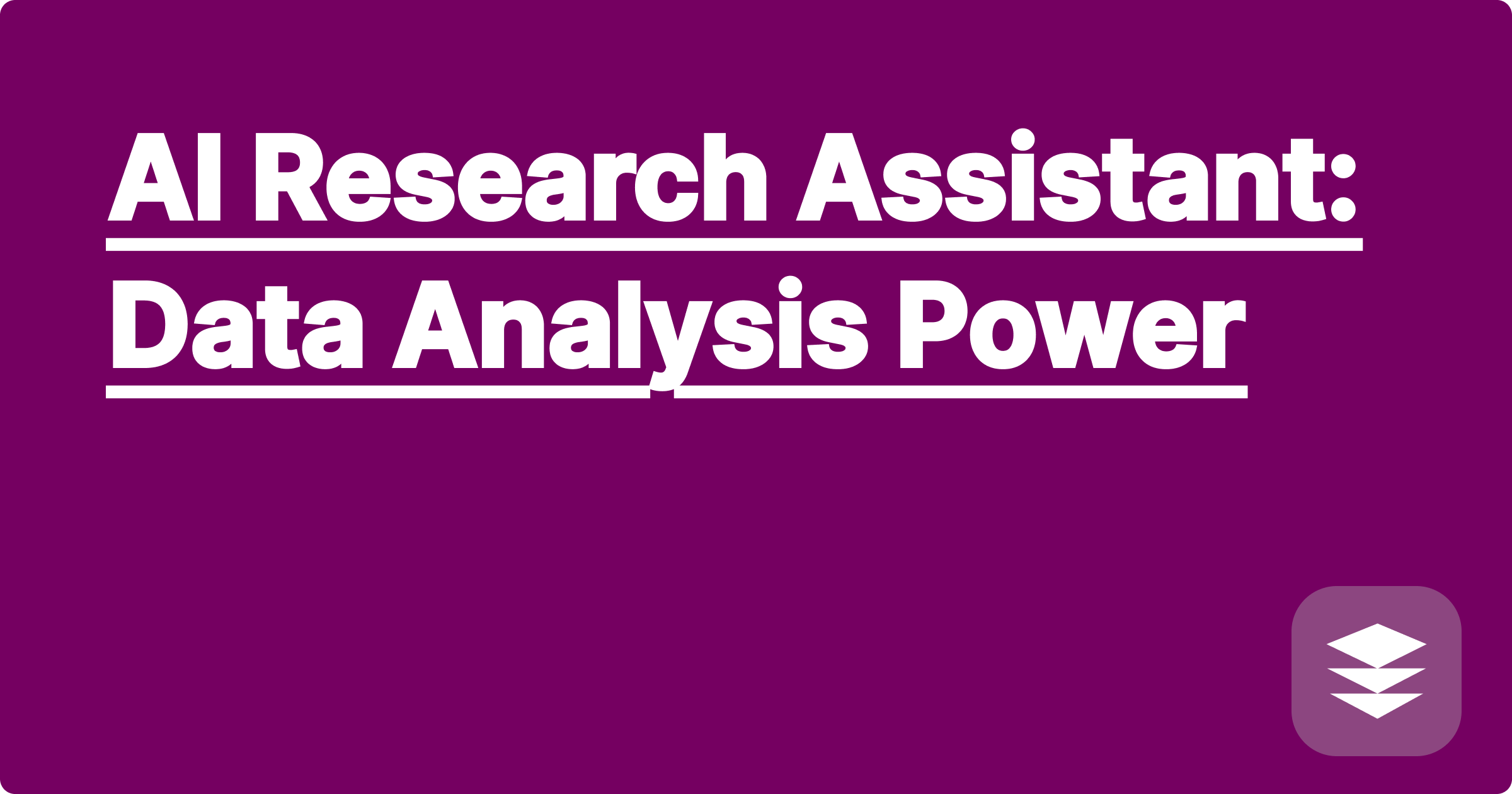
The sheer volume of data generated in modern STEM research can feel overwhelming. From complex simulations in physics to high-throughput screening in biology, researchers are constantly grappling with massive datasets. Traditional data analysis methods often struggle to keep pace, leading to bottlenecks in research progress. Imagine spending weeks manually sifting through spreadsheets, only to realize you need to re-analyze everything with different parameters. This is where the power of AI comes in, offering a transformative approach to data analysis and unlocking unprecedented research productivity.
For STEM students and researchers, efficient data analysis is not just a desirable skill; it's a necessity. The ability to quickly and accurately extract insights from data can significantly accelerate the research process, leading to faster publications, more impactful discoveries, and a competitive edge in the academic world. This blog post explores how AI research assistants, particularly focusing on a hypothetical tool called GPAI (Generalized Personal AI), can revolutionize your data analysis workflow, saving you valuable time and empowering you to focus on the bigger picture of your research. We'll delve into practical examples, step-by-step implementations, and real-world applications across various STEM disciplines, offering a comprehensive guide to harnessing the power of AI for enhanced research productivity.
The challenges in STEM data analysis are multifaceted. Datasets are often large, complex, and heterogeneous, requiring specialized knowledge and sophisticated software for effective analysis. Traditional statistical methods can be time-consuming and may not be suitable for all types of data. Furthermore, visualizing complex data in a meaningful way can be a significant hurdle, hindering the interpretation and communication of research findings. For students, these challenges can be particularly daunting, often requiring a steep learning curve to master the necessary tools and techniques. Researchers, too, face pressure to analyze data efficiently while ensuring accuracy and reproducibility. This creates a demand for more intuitive, powerful, and accessible data analysis solutions.
AI research assistants like our hypothetical GPAI offer a promising solution to these challenges. GPAI, envisioned as a personalized AI partner, can automate many tedious aspects of data analysis, from data cleaning and preprocessing to statistical modeling and visualization. Think of it as having a dedicated research assistant who can handle the heavy lifting of data manipulation, allowing you to focus on interpreting the results and drawing meaningful conclusions. GPAI can be integrated with existing tools like Python libraries (NumPy, Pandas, Scikit-learn), statistical software (R, SPSS), and visualization platforms (Tableau, matplotlib), enhancing their capabilities and streamlining your workflow. By leveraging natural language processing and machine learning, GPAI can understand your research questions and suggest appropriate analysis methods, even generating code snippets and visualizations automatically.
Imagine you have a dataset of experimental measurements. First, you would upload your data to GPAI, specifying the data format and any relevant metadata. GPAI can then automatically detect data anomalies and suggest cleaning procedures. Next, you can describe your research question in plain English, for example, "Is there a correlation between temperature and reaction rate?" GPAI will then suggest appropriate statistical tests, such as correlation analysis or regression modeling. GPAI can even generate the necessary code in your preferred language (e.g., Python, R) and execute the analysis, presenting the results in an easily interpretable format, including interactive visualizations. You can then refine your analysis by asking follow-up questions, such as "Visualize the relationship between temperature and reaction rate as a scatter plot," and GPAI will generate the requested visualization.
In materials science, GPAI can analyze microscopy images to identify microstructural features and predict material properties. For example, by training GPAI on a dataset of images and corresponding mechanical properties, it can learn to predict the strength of a material based on its microstructure. In genomics research, GPAI can analyze gene expression data to identify differentially expressed genes and predict biological pathways involved in disease. It can also be used to analyze protein structures and predict protein-protein interactions. In climate science, GPAI can analyze large-scale climate models to identify trends and predict future climate scenarios. It can also be used to analyze satellite imagery to monitor deforestation and other environmental changes.
Start by identifying the most time-consuming aspects of your data analysis workflow. These are the areas where AI can have the biggest impact. Experiment with different AI tools and find the ones that best fit your research needs. Don't be afraid to ask for help and collaborate with others who have experience using AI in research. Remember that AI is a tool, and its effectiveness depends on how you use it. Focus on developing a strong understanding of the underlying scientific principles and use AI to augment your analytical capabilities, not replace them. Critically evaluate the results generated by AI and validate them using traditional methods whenever possible.
As AI continues to evolve, its role in STEM research will only grow. By embracing these powerful tools and incorporating them into your workflow, you can significantly enhance your research productivity, unlock new discoveries, and contribute to the advancement of science and technology. Explore the available resources, experiment with different AI tools, and discover how these powerful technologies can transform your research journey. The future of STEM research is data-driven, and AI is the key to unlocking its full potential.
AI in Robotics: Efficient Simulations
GPAI: Your AI Study Partner for STEM
AI Research Notes: Organize Smartly
Ace STEM Exams: AI Study Partner
AI in CAD: Design Smarter, Faster
AI for Chemistry: Equation Ace
AI for Biology: Data Visualization
AI for Simulations: Optimize Results